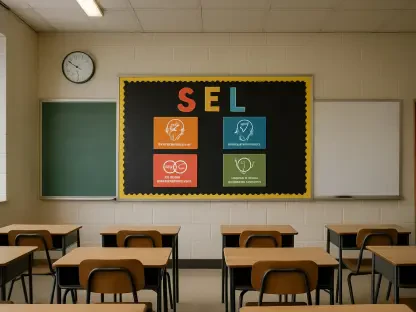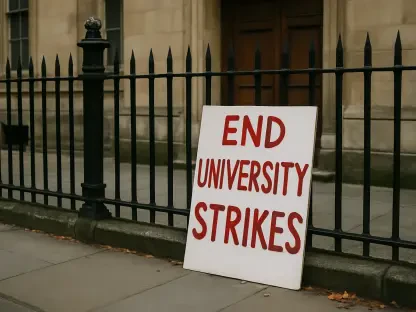The landscape of American higher education has been notably transformed in recent years due to the restrictive visa policies imposed on international students. These actions have created financial burdens on U.S. colleges and are causing widespread concern. The increase in visa processing delays, scrutiny of social media activity, and travel bans from various countries have all contributed, leading to a deterrence of potential international students. Some institutions, esteemed for their diverse student bodies and global reputation, find themselves grappling with an unexpectedly stark financial reality. Amid these challenges, the need for strategic planning becomes increasingly apparent.
Impact on College Finances
Dependency on International Tuition Revenue
The ramifications of reduced international enrollment present significant budgetary issues for many U.S. colleges, underscored by analysis from Moody’s. International students, who often pay full tuition, have long provided an essential source of income for universities. Facing forecasts of declining traditional-age student populations, institutions rely heavily on these tuition fees to maintain economic stability. A worrying scenario emerges when considering that a 10% reduction in international student numbers can profoundly affect nearly 14% of colleges by impacting operating performance by at least half a percentage point. A possible 20% reduction only deepens this fiscal strain, affecting over 33% of institutions similarly.
With the fiscal stakes raised, institutions with low margins may feel intense pressure and face potential cuts to programs and services. The fiscal health of these colleges becomes precarious, demanding a transition toward finding sustainable alternatives. The traditional financial safety nets these colleges rely on appear increasingly fragile in this uncertain atmosphere. Existing financial strategies may need to be reevaluated as administrations strive to find operational efficiencies or explore new revenue streams to counteract the downturn. Such reflexive measures are crucial but can only go so far when confronting systemic challenges.
Challenges for Specialty Institutions
Particularly vulnerable to these changes are colleges that focus on specialized areas, such as arts institutions, often boasting high international student enrollments. Many of these colleges find themselves in a precarious position due to their inherently narrow focus combined with an already challenging educational landscape. This specificity limits flexibility, making adaptation to reduce reliance on international admissions inherently challenging. Declines in international student numbers can thus leave such institutions grappling with a potentially existential threat.
These schools, unlike their more broad-based counterparts, can’t always pivot to increase domestic enrollment in a way that would immediately offset losses. Whereas larger universities might mobilize existing resources toward bolstering domestic interest, specialty institutions lack the breadth of curriculum necessary to pursue such action. With a dwindling pipeline of international students, the survival of these niche colleges may demand an even more granular approach to fundraising, curriculum diversification, and financial planning.
Possible Remedies and Strategic Planning
Mitigating Impact Through Fundraising and Endowments
While comprehensive impact isn’t wholly preventable, institutions with strong financial reserves might be able to resist the full brunt through various means. Highly selective colleges with significant endowments often lead in this sphere, able to undertake cost-optimizing operations or incentivize domestic enrollment to maintain budgetary equilibrium. These schools may tap into alumni networks, increase endowment payouts, or leverage fundraising campaigns extensively to bridge temporary shortfalls exacerbated by international student policy shifts.
Investment in domestic student recruitment, alongside enhanced offerings and marketing strategies, provides an opportunity to offset some financial stress. Remote teaching and hybrid learning models, refined during global disruptions, might be adapted domestically to engage a broader student demographic. In doing so, selective institutions promise not only to survive but perhaps even thrive within redesigned paradigms reshaping education.
Long-term Strategic Adjustments
Proactive adaptation is indispensable for colleges across the board, enhancing resilience amid evolving educational landscapes. Rationalizing operations, better endowment utilization, and strategic investments in technology and infrastructure can help diffuse fiscal risks. Diversified student recruitment strategies and innovative curriculum adaptations could widen appeal, simultaneously addressing shifts in student interest and strengthening long-term viability.
For many institutions, this means pursuing collaborations with other educational entities, industry stakeholders, and policymaking bodies to navigate these challenging times jointly. As international policy uncertainty remains a constant, an industry-wide shift towards thoughtful, sustainable institutional growth must fuel strategic recalibrations. Colleges must take a holistic view of fiscal responsibility, examining not only immediate needs but also long-term objectives aimed at integrating financial stability with academic goals.
Reflecting on the Path Forward
In recent years, American higher education has undergone significant changes due to increasingly strict visa policies affecting international students. These policies have resulted in financial strain for U.S. colleges and are raising widespread concerns. Delays in visa processing, scrutiny of social media activities, and travel bans from certain countries have all played a role in deterring prospective international students from attending U.S. institutions. As a result, some universities and colleges, traditionally known for their diverse student populations and global prestige, are facing unexpected financial challenges. These issues underscore the urgent need for institutions to consider strategic planning and thought-out responses to adapt and thrive amid this evolving landscape. Ensuring that these institutions can financially sustain themselves is critical, and understanding these dynamic international relationships could be central to formulating effective responses that maintain a welcoming environment for global scholars.









